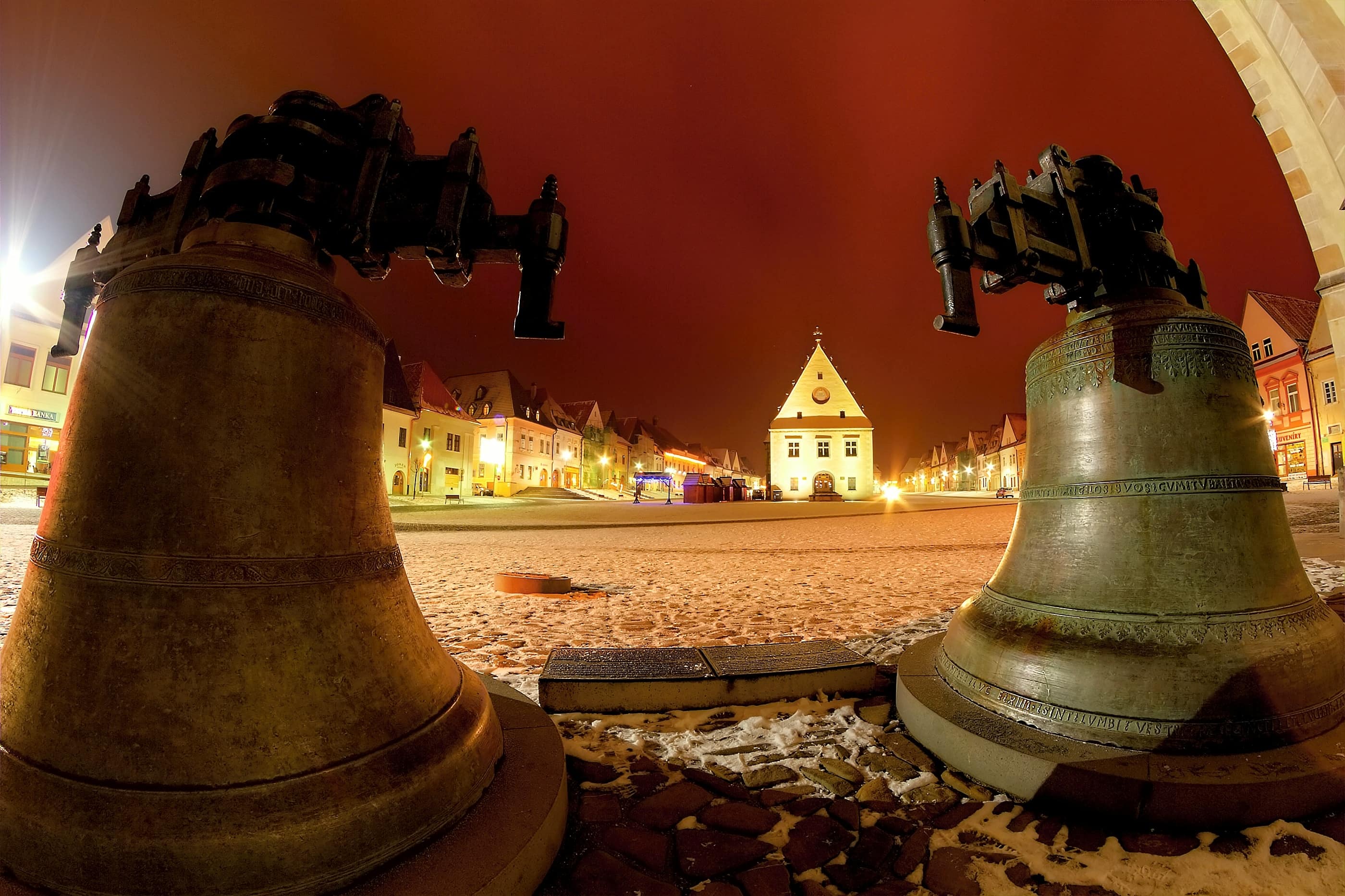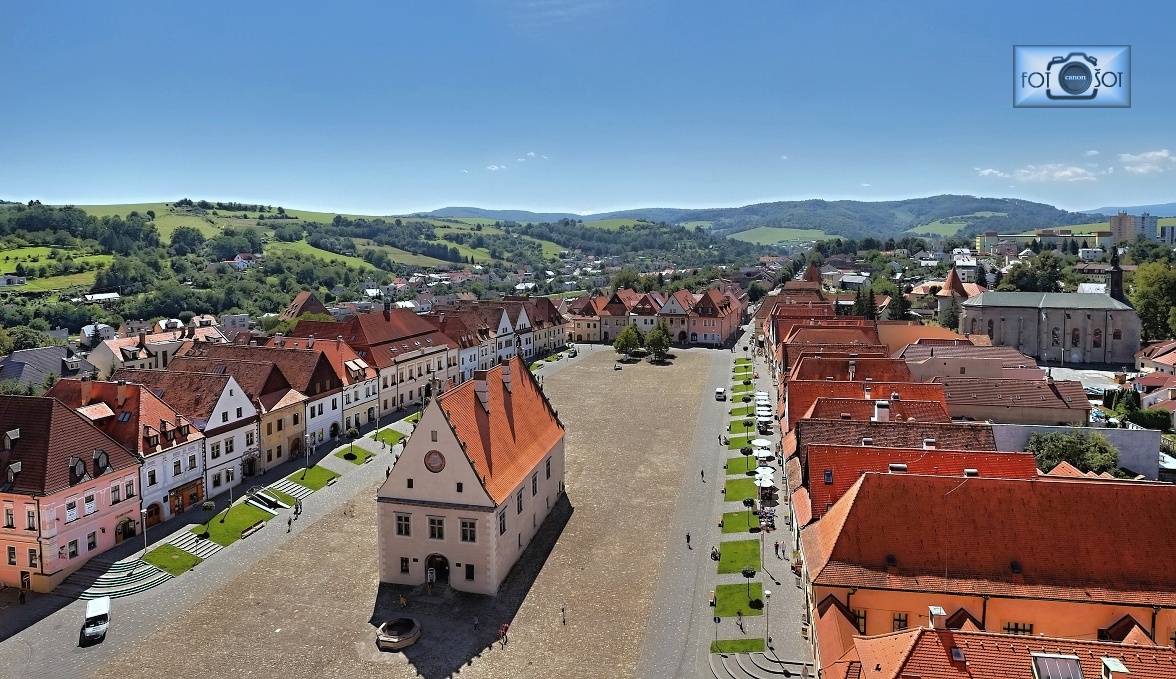FROM HISTORY OF BARDEJOV
The earliest mention of Bardejov is from 1241 as the record in the Ipatievsky annals. By the document from 1247, the transcript of which is archived in the District Archive in Bardejov, King Bela IV was addressing territorial disputes between German settlers from Prešov and the Cistercian monk order, who taught here.
Bardejov was located on important trade route between the Black and the Baltic seas. Vivid trade exchange in a relatively short time transformed a small settlement into a rich town that attracted attention of all Hungarian monarchs. Extensive privileges granted by King Charles Robert in 1320 boosted further developments.
King Louis I. commanded to fortify the town.
In the same year the town was given the right to hold an annual market. In 1365 it gained a guttural right. Bardejov had also its own executioner. Thanks to many other rights and privileges the town was developing and gaining in esteem, so in 1376 King Louis I. granted it a status of free royal town. Within one century the town had developed in the extent as per the tax register in 1437, counting 517 houses and 3 000 residents in the inner city and out of the walls another 300 houses. There were 64 registered crafs, 51 guilds and 146 master craftsmen.

15th century also had its darker side. In 1412 King Sigmund pawned the town as a loan security to the Polish nobleman Balický for 13 000 guilders. Only in 1477 the King Matthias Corvinus ruled on the invalidity of the pledge, but he insisted on payments into his treasury. 16th century favored a culture and education development. There was a school of humanities having a reputation throughout entire Hungary. Under the leadership of Rector Leonard Stöckel it became a center of culture, education and the formation of religious life.
Parish library was made available to the public, two printing houses were founded, the Gutgesel´s and the Klösz´s ones. Historically, the most important role played the Gutgesel´s printing house, where many outstanding works were printed. Favorable cultural climate contributed to the opening of library and bookstore.
The 17th century brought economic decline of the town. A fire set in 1680 by Tököly´s soldiers almost entirely destroyed it. Also Rakoczi´ soldiers and a plague epidemic contributed to regression.
The 19th century brought development of banking and industry, albeit on a small scale. In 1883 a toy factory was founded in the town and the toys represented Bardejov at exhibitions in Vienna, Budapest and at the World Exhibition in Paris. An important moment was the opening of railway on the route Prešov - Bardejov in 1893. Faint industry and underdeveloped agriculture caused a massive wave of emigration. The largest growth was recorded after the World War II. It brought a boost to the industry, education and building of new settlements. After 1989, many industrial enterprises have ceased to exist.
The historic town center was already in 1950 declared an urban conservation area. Extensive renovations of historical town part in the seventies were followed by the renovation works in the nineties of the 20th century and are being extended to the present.
Towns Bardejov, Kežmarok, Levoča and Stará Ľubovňa signed a declaration in July 2001, and together they have formed the Association "Slovak Royal Towns - Renaissance" aimed at preservation and enhancing historic and cultural heritage and promotion of economic development of these towns.

UNESCO
The goal of UNESCO (United Nations Educational Scientific and Cultural Organization) is to protect the most valuable natural, cultural objects and locations of our planet. In 1972, at the general conference UNESCO in Paris, convention was accepted and its goal is to protect, preserve, present and pass on to the future generations the most significant cultural and natural valuables. According to the convention, a 21-member committee was established, which maintains their list, the so-called List of World Cultural and Natural Heritage, and monitors their condition.
On the basis of the 24th meeting of the UNESCO World Heritage Committee in the Australian Caims on November 30th, 2000, the historical core of Bardejov, together with the complex of buildings forming the Jewish suburbium, became the fourth cultural heritage site registered in the UNESCO World Cultural and Natural Heritage List.
It is the historical part of the city of Bardejov with the jewels of the city - Bazilika minor of St. Egidius, the city hall and town houses lining the market square in the Renaissance and Baroque style. Close to the center of the city, is an urban curiosity of eastern Slovakia - the only partially preserved set of former Jewish baths and a synagogue, a remnant of a suburban center from the end of the 18th century, built according to plan and according to Talmudist regulations.
The territory within the protection zone of the city monument reserve, including the area of the Jewish suburbia, added three Slovak sites of world cultural heritage - Banská Štiavnica and the technical monuments of the area, Spiš Castle and the monuments of the area and Vlkolínec. Bardejov is a representative of unique values that illustrate the uniqueness and diversity of Slovak cultural heritage in comparison with global historical and cultural values.
Source: www.bardejov.sk